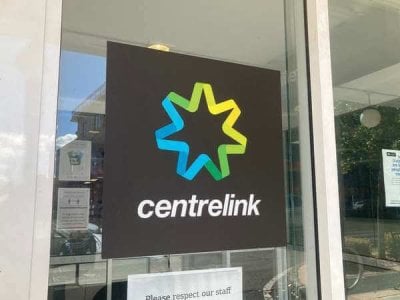Millions of Aussies affected: How the new changes to your JobSeeker welfare payments could impact you
- Replies 131
For a significant number of retired and unemployed Australians, welfare payments are the primary source of income.
That’s why we here at Seniors Discount Club are always keeping a keen eye on any government changes that could affect your payment plans.
Due to a recent parliament-passed increase, welfare recipients are gearing up to welcome a substantial $40-a-fortnight boost.
Considering the current cost of living crisis, this additional income is set to benefit millions of Australians.
Australians without children on Jobseeker can expect a climb from a little over $693 to around $749 a fortnight starting from September 20 under the new amendments.
This sizable top-up consists of a pre-revealed $40-per-fortnight bump in the federal budget, coupled with an additional increment of $16 as a regular part of indexation.
In the same vein, senior JobSeekers can look forward to an incremental leap to $802.50 per fortnight.
Moreover, single parents with children aged eight and above will be eligible for the higher Parenting Payment Single rate. This amendment will insert an extra $177 into their accounts each fortnight until their youngest child reaches 14.
Services such as Youth Allowance, Parenting Payment (Partnered), Austudy, ABSTUDY Living Allowance, Disability Support Pension (Youth) and the Special Benefit will also increase by $40 per fortnight.
Social Services Minister Amanda Rishworth has stated these increases will ease the cost of living pressures for around two million Australians.
Labor assistant minister Tim Ayres has agreed, expressing that the safety net bill is marking a ‘very substantial improvement’ in welfare, one that will create a tangible difference.
However, it's also worth noting that the Greens pushed for an even further increase to the income support rate to $88 a day–or $1232 a fortnight–to lift it beyond the poverty line as the cost of living and housing crisis continues to bite hard.
Unsuccessful in their quest, Greens senator Janet Rice voiced her disappointment.
Highlighting the ongoing struggle, she stated that passing the modest increase would only condemn vulnerable people to poverty instead of offering a substantial solution conducive to welfare, health, and job search.
‘Which is absolutely bad for their wellbeing, their health and their ability to get a job—if you’ve got people living in poverty, you’re not in a position to be able to get a job,’ Senator Rice said.
‘It is absolutely shameful.’
Senator Ayres also stated he respected the arguments for higher welfare payments; however, the government was dealing with increased pressures on the budget, and higher rates would further cost ‘billions and billions of dollars’.
Independent senator David Pocock—who supported the idea of increasing payments to $88 a day, stated that the government was ‘kidding itself’ if it thought it could save money on welfare expenses and not spend it on other sectors, such as health and policing.
‘We’re going to have to pick up the bill eventually, and so it’s such short-term thinking to think that “Oh, we can just rip away social security payments, have people living in poverty, and that’s better for taxpayers”—it’s not,’ he explained.
‘We will be paying the cost when it comes to the health of those people who can’t afford fresh food, who can’t afford the basic necessities in life and who certainly can’t afford to fulfil scripts, to go and see the GP when they need it.’
The opposition and the Greens also made an effort to increase the threshold people could earn before experiencing a drop in their benefits from $150 to $300.
But that, too, didn’t pass, and Liberal frontbencher Anne Ruston commented that incentivising people to work more hours would create better job opportunities than increasing the welfare pay.
‘We philosophically believe that increasing the income-free areas and taking away the barriers... is a much more effective way of getting people back into the workforce,’ she stated.
While the debate about the effectiveness of these changes continues, there’s no denying that it is a small step towards helping vulnerable people around the country.
 If you have more questions about this recent change, we highly encourage getting in touch with Services Australia.
If you have more questions about this recent change, we highly encourage getting in touch with Services Australia.
So, what are your thoughts, members? Do you think $40 a fortnight is enough to tide you over amid the high cost of living? Tell us your thoughts below!
That’s why we here at Seniors Discount Club are always keeping a keen eye on any government changes that could affect your payment plans.
Due to a recent parliament-passed increase, welfare recipients are gearing up to welcome a substantial $40-a-fortnight boost.
Considering the current cost of living crisis, this additional income is set to benefit millions of Australians.
Australians without children on Jobseeker can expect a climb from a little over $693 to around $749 a fortnight starting from September 20 under the new amendments.
This sizable top-up consists of a pre-revealed $40-per-fortnight bump in the federal budget, coupled with an additional increment of $16 as a regular part of indexation.
In the same vein, senior JobSeekers can look forward to an incremental leap to $802.50 per fortnight.
Moreover, single parents with children aged eight and above will be eligible for the higher Parenting Payment Single rate. This amendment will insert an extra $177 into their accounts each fortnight until their youngest child reaches 14.
Services such as Youth Allowance, Parenting Payment (Partnered), Austudy, ABSTUDY Living Allowance, Disability Support Pension (Youth) and the Special Benefit will also increase by $40 per fortnight.
Social Services Minister Amanda Rishworth has stated these increases will ease the cost of living pressures for around two million Australians.
Labor assistant minister Tim Ayres has agreed, expressing that the safety net bill is marking a ‘very substantial improvement’ in welfare, one that will create a tangible difference.
However, it's also worth noting that the Greens pushed for an even further increase to the income support rate to $88 a day–or $1232 a fortnight–to lift it beyond the poverty line as the cost of living and housing crisis continues to bite hard.
Unsuccessful in their quest, Greens senator Janet Rice voiced her disappointment.
Highlighting the ongoing struggle, she stated that passing the modest increase would only condemn vulnerable people to poverty instead of offering a substantial solution conducive to welfare, health, and job search.
‘Which is absolutely bad for their wellbeing, their health and their ability to get a job—if you’ve got people living in poverty, you’re not in a position to be able to get a job,’ Senator Rice said.
‘It is absolutely shameful.’
Senator Ayres also stated he respected the arguments for higher welfare payments; however, the government was dealing with increased pressures on the budget, and higher rates would further cost ‘billions and billions of dollars’.
Independent senator David Pocock—who supported the idea of increasing payments to $88 a day, stated that the government was ‘kidding itself’ if it thought it could save money on welfare expenses and not spend it on other sectors, such as health and policing.
‘We’re going to have to pick up the bill eventually, and so it’s such short-term thinking to think that “Oh, we can just rip away social security payments, have people living in poverty, and that’s better for taxpayers”—it’s not,’ he explained.
‘We will be paying the cost when it comes to the health of those people who can’t afford fresh food, who can’t afford the basic necessities in life and who certainly can’t afford to fulfil scripts, to go and see the GP when they need it.’
The opposition and the Greens also made an effort to increase the threshold people could earn before experiencing a drop in their benefits from $150 to $300.
But that, too, didn’t pass, and Liberal frontbencher Anne Ruston commented that incentivising people to work more hours would create better job opportunities than increasing the welfare pay.
‘We philosophically believe that increasing the income-free areas and taking away the barriers... is a much more effective way of getting people back into the workforce,’ she stated.
While the debate about the effectiveness of these changes continues, there’s no denying that it is a small step towards helping vulnerable people around the country.
Key Takeaways
- Welfare recipients in Australia are set to receive a $40-a-fortnight increase, boosting payments for those on JobSeeker and other welfare programs from September 20.
- The Greens had proposed a higher increase to bring income support rates above the poverty line, which was rejected by the government and opposition.
- Single parents with children aged eight and above will be eligible for the higher Parenting Payment Single rate, gaining an additional $177 each fortnight until their youngest child turns 14.
- Despite calls for higher welfare payments, the government cited significant pressures on the budget, with other cost-of-living measures introduced to work alongside the increase.
So, what are your thoughts, members? Do you think $40 a fortnight is enough to tide you over amid the high cost of living? Tell us your thoughts below!









